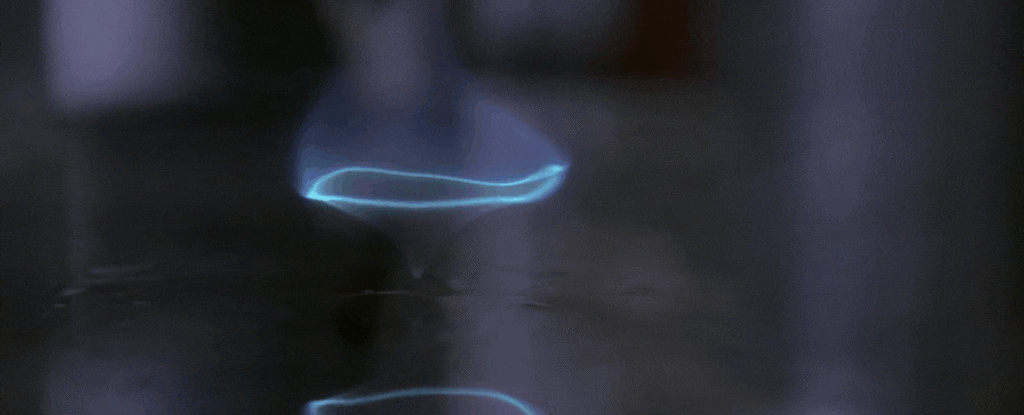Products You May Like
For hundreds of thousands of years, humans have cultivated a close relationship with fire. But for all our fascination and intimacy, both with its dangers and its uses, fire can still stun us with something we’ve never seen before.
The blue whirl flame was discovered quite by accident just a few years ago. Scientists were studying a particularly dangerous type of flame – the whirls that, in wildfires, turn into terrifying fire tornadoes that wreak disaster, but that could be harnessed to generate power, or clean oil spills.
But from their sooty flames emerged something new – a clean, dancing, pure blue twist of fire. Now, scientists have used simulations to reproduce the eerily beautiful flame – and through doing so, have finally come to understand its structure.
“A fundamental question for combustion theory that was posed by the blue whirl is the following: What is the flame structure of the blue whirl?” the researchers wrote in their paper.
“Only if we understand its structure can we tame it, scale it, and create it at will.”
What makes fire whirls so dangerous is what also makes them interesting as a potential tool.
They are generated when wind and fire combine to create a vortex of flame. The swirl properties give this flame higher combustion efficiency and lower emission rate, which led scientists to wonder if it could be used, for example, to clean up oil spills.
When the blue whirl emerged, they were even more intrigued. Flame burns yellow due to the blackbody emissions by radiating soot particles – and soot is only present when the fire doesn’t have enough oxygen to completely burn all the available fuel. So, a blue or violet flame is one that is burning up all available fuel with complete efficiency.
The blue whirl flame was curious for several reasons. It emerged spontaneously, soot-free and stable, from a turbulent, sooty flame. It remained very quiet and stable, persisting until all available fuel was burned.
Scientists were able to map its temperature, and determine how the blue whirl could be stabilised. But the structure remained a mystery – so the team turned to three-dimensional numerical simulations to recreate a blue whirl flame emerging from a yellow whirl flame through several transitions as a result of vortex breakdown.
Once they had tweaked their parameters sufficiently, sure enough, the simulated flame closely matched the real deal.
And it revealed that the blue whirl is a fiery chimera, made up of three different kinds of flame that combine to become a forth type, the blue whirl.
 (Chung et al. SciAdv, 2020)
(Chung et al. SciAdv, 2020)
The bottom part of the flame below the blue ring is a rich premixed flame. This is a flame in which the fuel and oxidiser are already mixed, with an excess of fuel compared to oxidiser. The top part above the bright ring is a diffuse flame, in which the fuel and oxidiser are separate. And outside the diffuse flame is a lean premixed flame, where there is more oxidiser than fuel.
The fourth flame is the ring. This is where all three flames join together, a triple flame. It’s what is known as a stoichiometric premixed flame – in which oxidiser and fuel are both present in perfect amounts for complete combustion.
This information won’t turn blue whirls into useful fire overnight. But it does constitute the groundwork that could get us there. And getting there could be huge.
Hydrocarbons form the base of fossil fuels, the burning of which generates vast amounts of harmful emissions – yet many governments are dragging their feet on transitioning from reliance on fossil fuels to cleaner energy.
Being able to harness blue whirl flames for combustion energy could ease that transition.
Of course, there are many problems to surmount first – not least of which is how to generate the blue whirl without the need for the dangerous yellow fire whirl.
“Can it be formed under controlled conditions more directly and without going through the fire whirl state? Can the size be controlled? Can it be made larger or smaller? Is there a scaling that can be used? Other, perhaps more far out questions, were: Can it be made without the confining walls? Can multiple blue whirls be made and work together? Could it be part of a combustor or a propulsion device?” the researchers wrote.
“This paper describes a first step: a tool that can be used to explore and test the phenomenon, and how it has been used to reveal the blue whirl structure.”
The research has been published in Science Advances.
